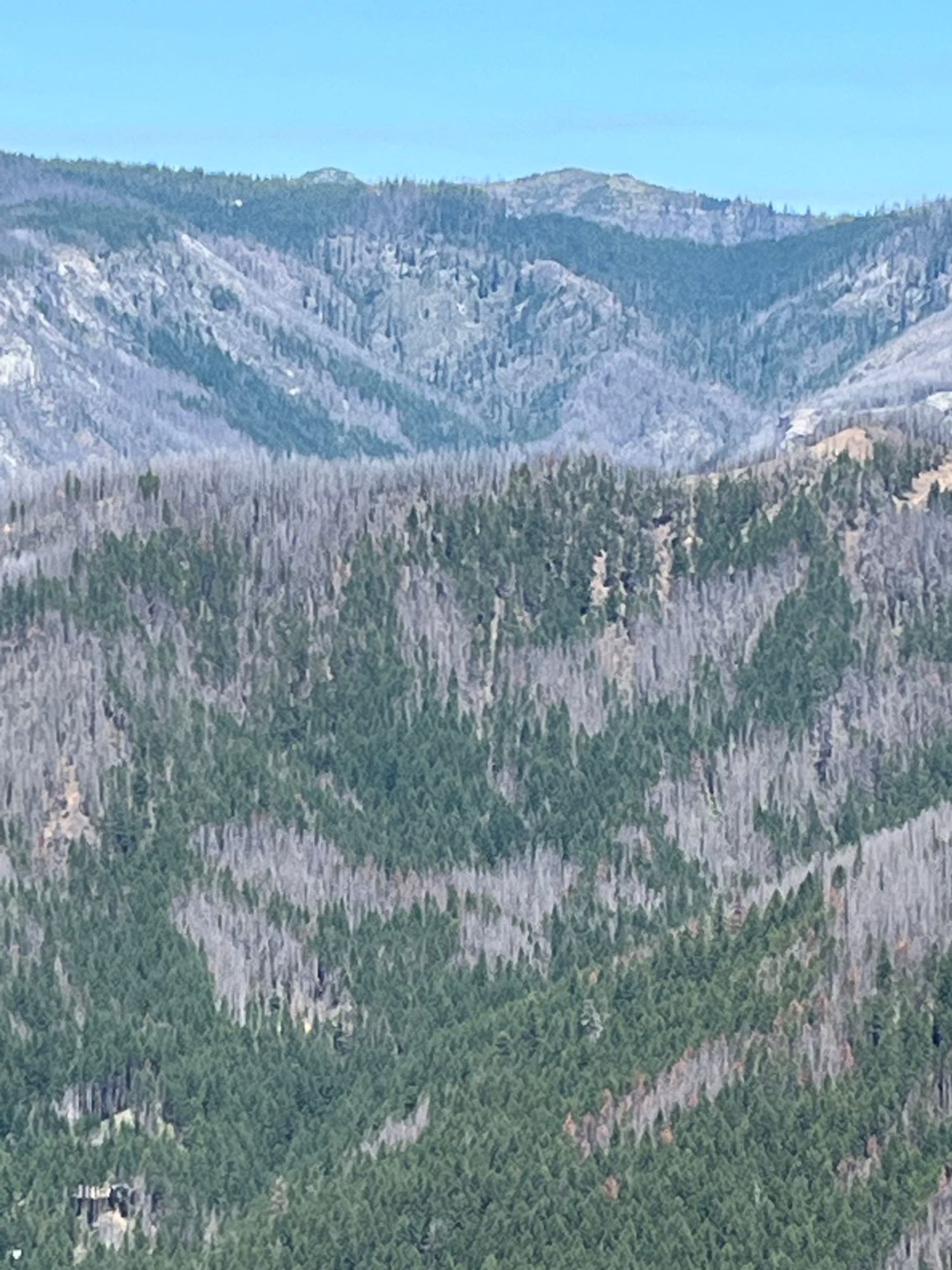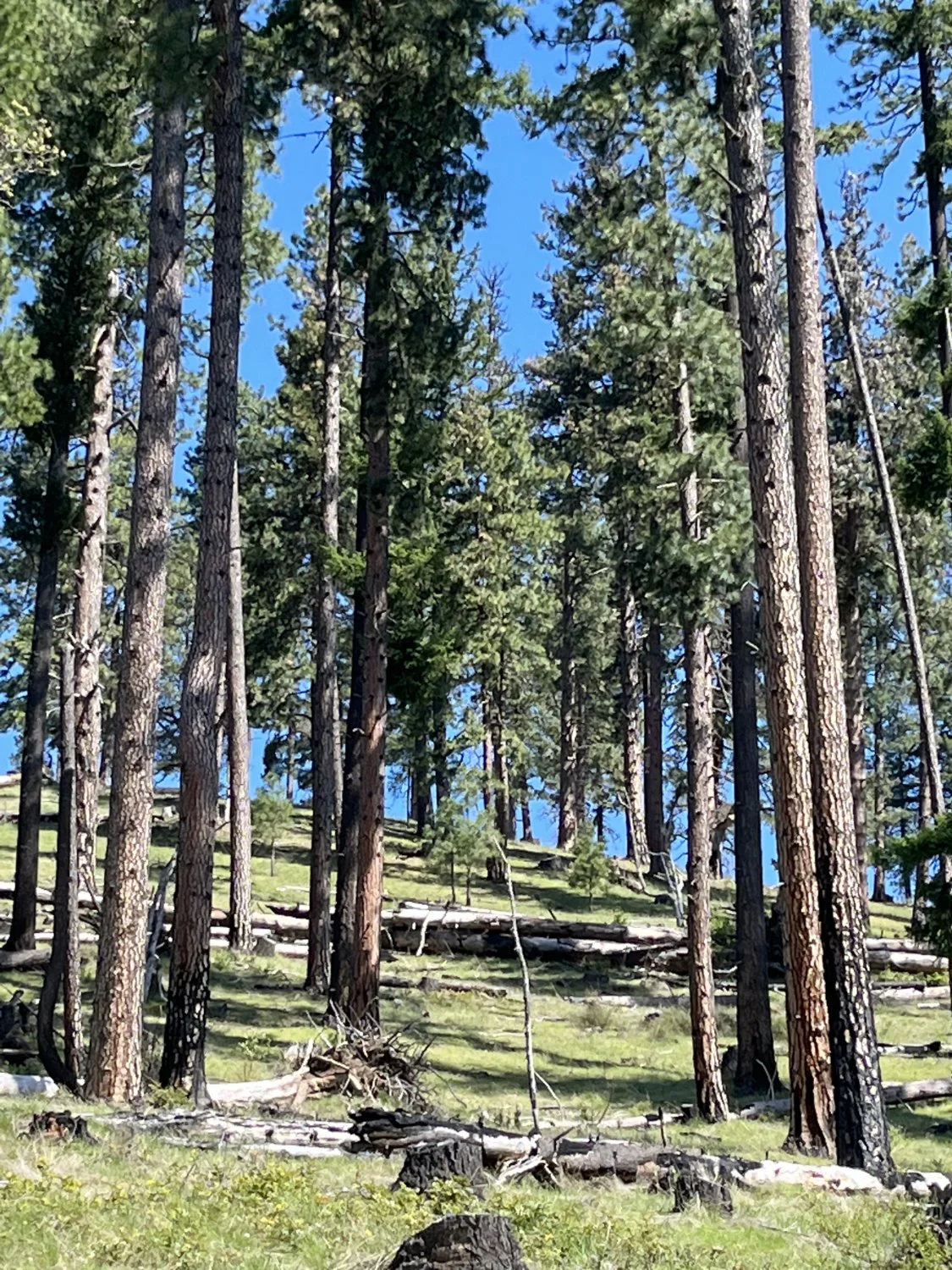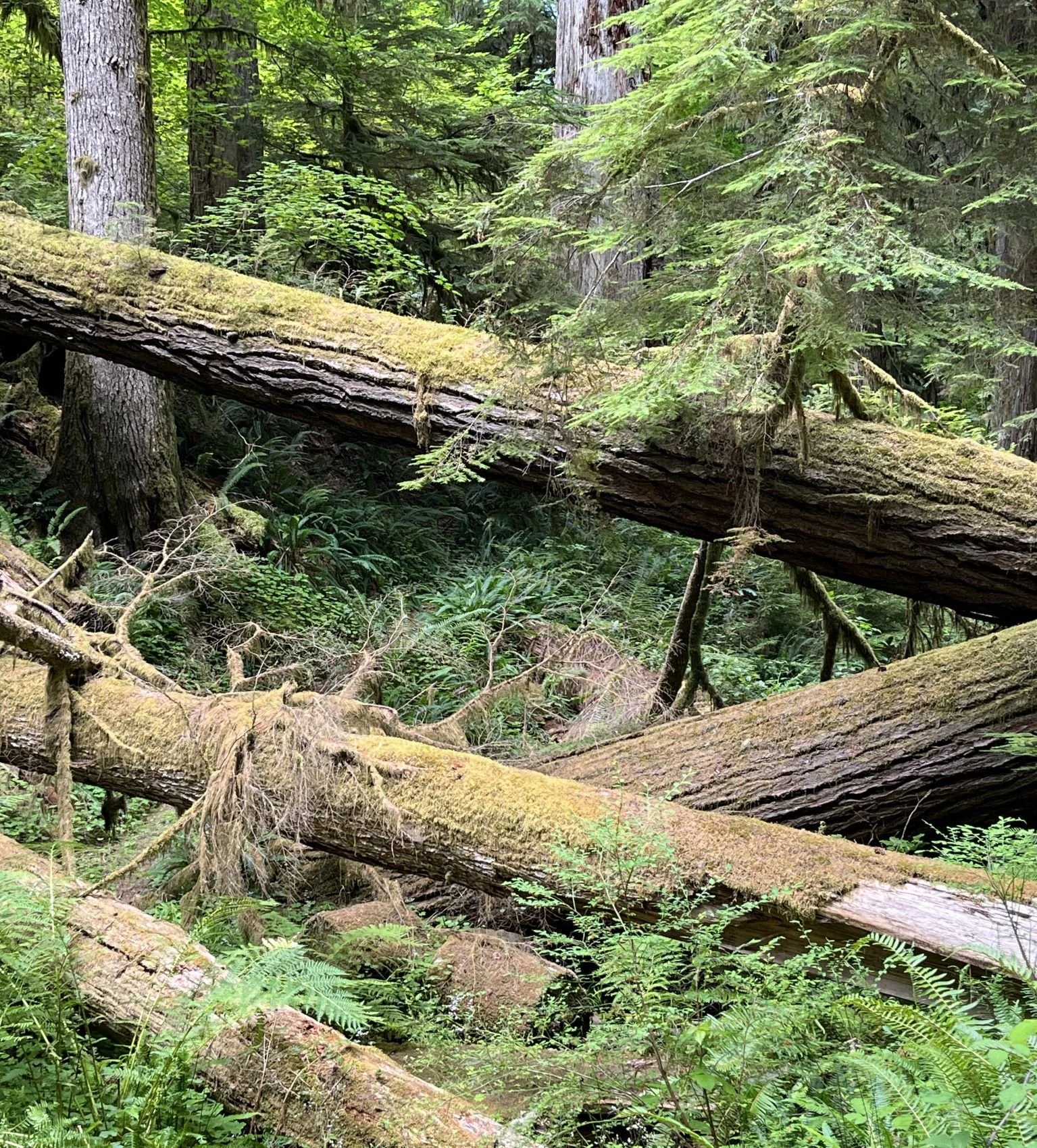
25 Years of Trailside Change
Significant changes to old forests found along the trails described in this hiking guide resulted from several mechanisms of change. Interestingly, the slow, steady march of seasonal growth and mortality can add up to notable differences in the structure and composition of a forest over 25-30 years. Conversely, major disruption came rapidly to many trails following disturbances, especially fire. Each hike description has a section where major changes are noted. I relied on detailed notes and photographic images from my first hikes on these trails in the 90s to refresh my memory, and to identify changes over the last 25-30 years.
On the plus side, forests in a late-mature stage have noticeably aged in certain areas becoming visibly more ‘old growthy’. Dominant trees are larger, the understory has become larger and more diverse, and in some cases, there are more large snags and dead wood. This is an important development, and there are significant areas of forest in this stage that will grow into early old growth in the coming decades if left undisturbed.
But the major source of change along trails has been wildfire, mirroring the dramatic increase in fire in the Willamette and Mt. Hood National Forests over the last seven years. On the Willamette National Forest, 11 of 50 old-growth hikes can no longer be considered old growth due to fire, and an additional 6 out of 50 hikes have been significantly affected by fire, reducing the quality and extent of old growth habitat. On the Mt Hood National Forest, 15 of 50 old-growth hikes can no longer be considered old growth due to fire, and an additional three hikes have been significantly affected. Combined, that’s 26% that are no longer old growth, and an additional 9% significantly affected, most in the last seven years. This is a very significant change.
One hike has been significantly affected by logging. The logging was planned and implemented as a restoration project in the dry mixed conifer forest of the southern Willamette NF and large trees were left standing (see hike 46, Youngs Rock). The logging removed much of the dense canopy of 80–100-year-old trees that came in following the start of fire exclusion, setting the stage for the site to be maintained in the semi-savannah conditions that were historically present. I recommend a visit to see for yourself.
The February 2019 weather event known locally as “Snowmageddon” dumped large amounts of heavy, wet snow toppling many large trees in affected areas. This noticeably changed the character of affected stands and led to significant damage to trails in some areas. This effect was especially noticeable in the Fall Creek watershed, but has now been overwritten by the Gales Fire (2021) and the Bedrock Fire (2023).

Mature forest (#35, Goodman Creek)

Lionshead Fire (2020)

Lionshead Fire (2020)

Cedar Creek Fire (#40 Black Creek; #41 South Waldo, 2022)

Savannah/dry conifer restoration logging (#46, Youngs Rock)

Snowdown (#28, Tall Trees)